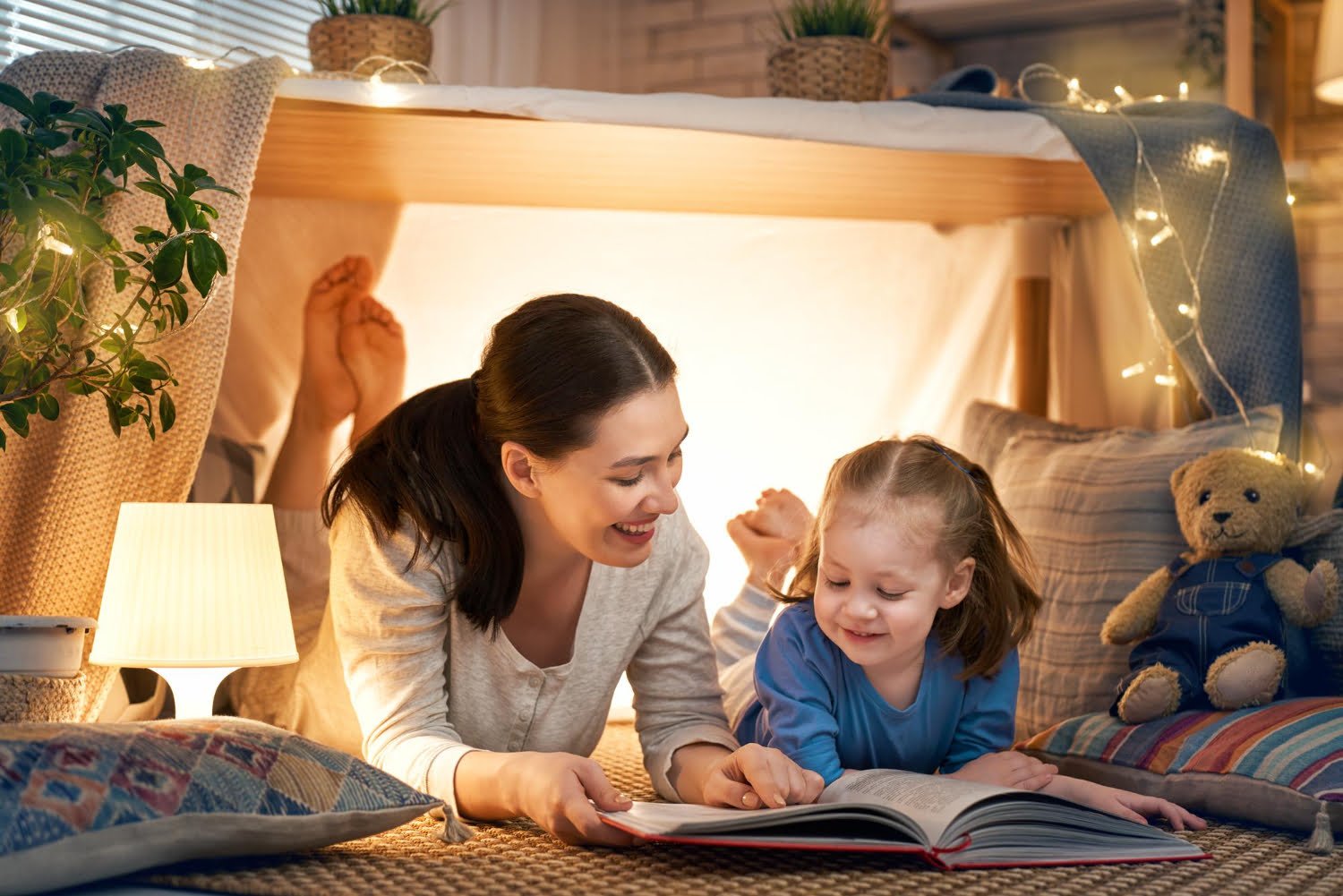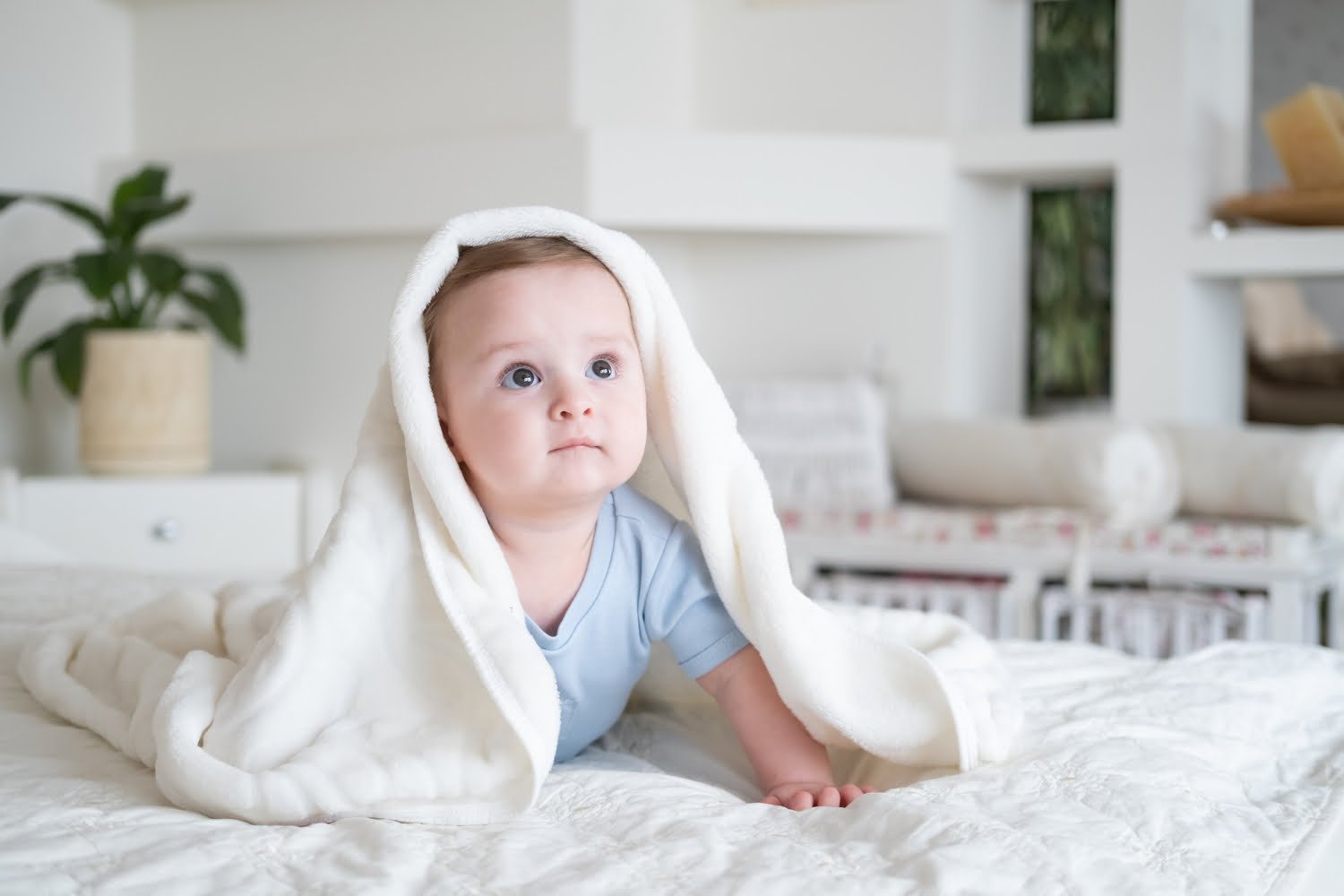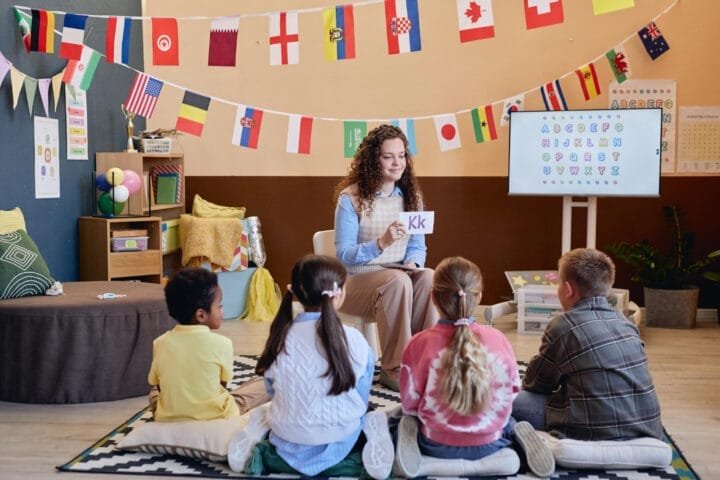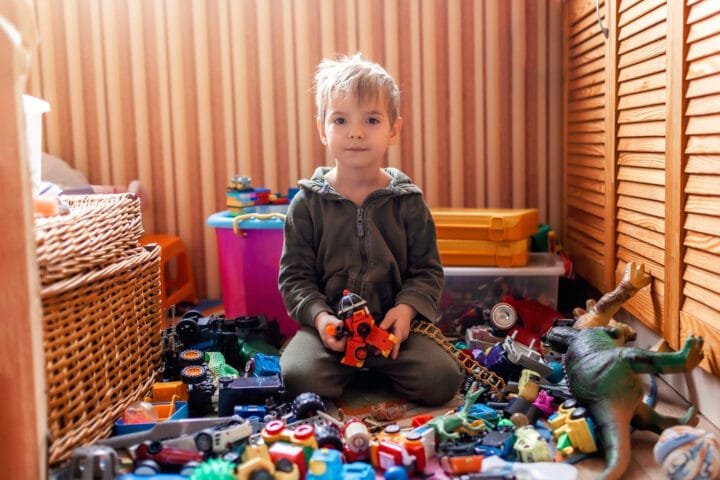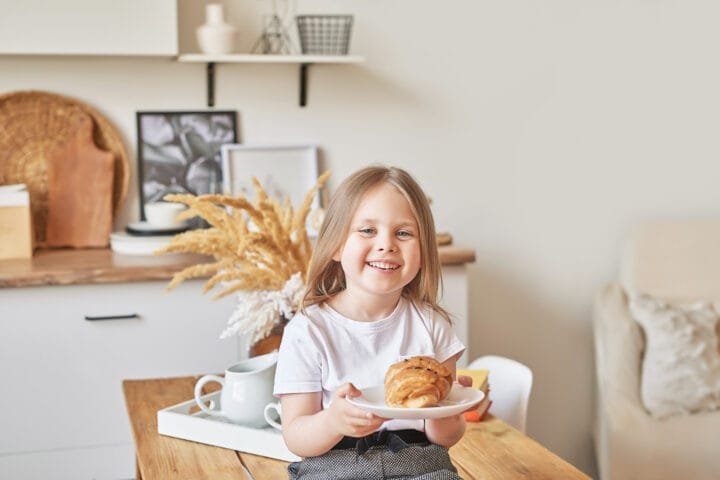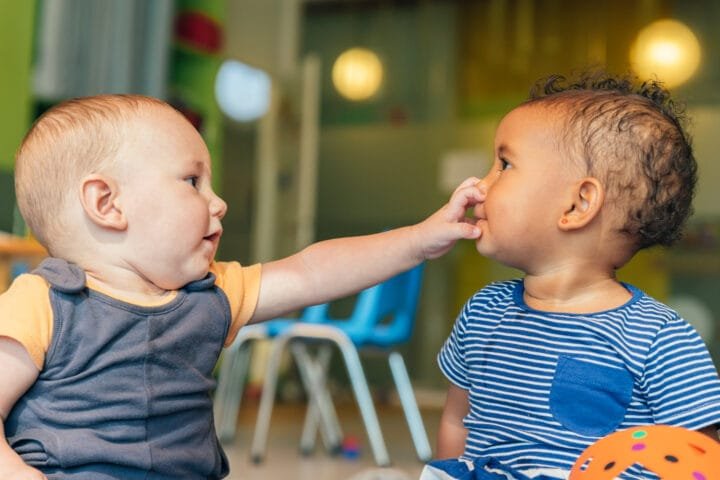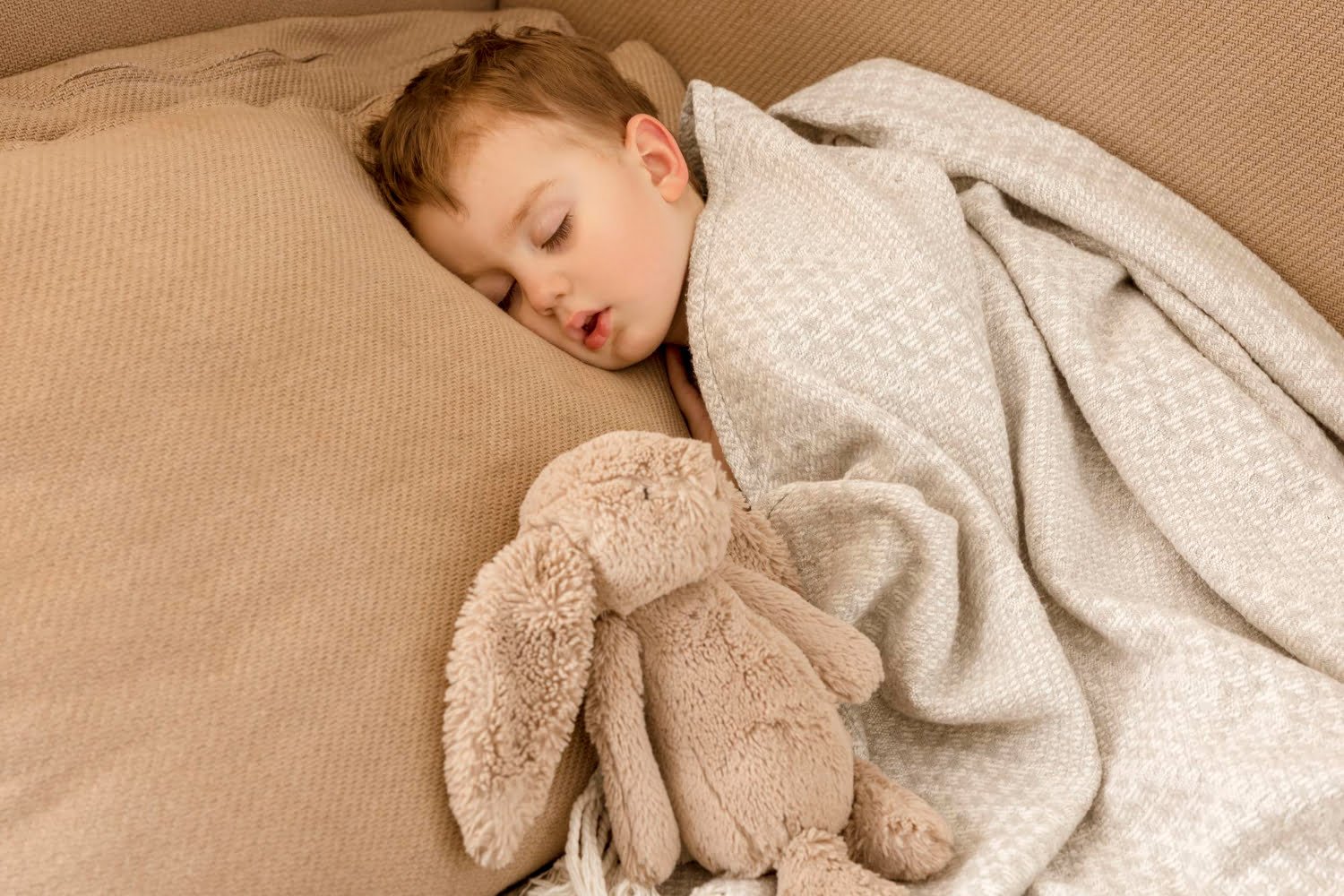Signs Baby is Too Hot While Sleeping – What Every Parent NEEDS To Know
Okay, mamas, let’s talk about one of the biggest anxieties of new parenthood: baby sleep! Who needs horror movies when you can spend the night obsessively checking if your little one is breathing? And let’s be honest, the fear of overheating is REAL. We’ve all been there, hovering over the crib, feeling their forehead, and wondering if those rosy cheeks are just cuteness overload or a sign of something more serious.
But fear not, fellow sleep-deprived warriors! We’re about to demystify those “signs baby is too hot while sleeping” and empower you with the knowledge to create a sleep haven that’s both safe and snug. Because a well-rested baby means a well-rested parent, and that’s a win-win in my book!
Decoding Baby’s Internal Thermostat: It’s Not Like Ours!
Ever noticed how your baby seems to run hot? Like, hot? Well, there’s a scientific reason for that. Babies aren’t just miniature adults; their bodies work differently, especially regarding temperature regulation. Think of it this way: their internal thermostat is still learning the ropes. They can’t adjust to temperature changes as quickly as we can, making them more susceptible to overheating.
According to Dr. Harvey Karp, renowned pediatrician and author of “The Happiest Baby on the Block,” “Babies have a larger surface area-to-body mass ratio than adults, which means they lose heat more quickly. But they also have less efficient sweat glands, so they can’t cool down as effectively.” This makes it even more crucial for us to be vigilant about the “signs baby is too hot while sleeping.”
But wait, there’s more! A study published in the journal Pediatrics found that overheating during sleep may increase the risk of SIDS (Sudden Infant Death Syndrome). The researchers concluded that “infants who sleep in overheated environments may be at increased risk of SIDS.” This is a serious concern, underscoring the importance of understanding how to keep our babies at a comfortable temperature.
Several factors contribute to a baby’s temperature. Room temperature is a biggie. But so are things like what they’re wearing, the type of bedding they use, and even their sleep position! Understanding these factors is like having a secret weapon in the battle against baby overheating.
Is Your Baby Too Hot? Spotting the Telltale Signs
Alright, mama detectives, let’s get down to business. How can we tell if our little one is turning into a tiny furnace while they snooze? It’s all about paying close attention to those subtle (and not-so-subtle) cues. Think of it as a baby sleep language we need to learn!
Physical Signs:
- Flushed cheeks and red skin: This is often the first thing we notice. Their little bodies are waving a red flag, saying, “Hey, it’s getting toasty here!” This happens because their blood vessels dilate in an attempt to release heat.
- Damp hair: Ever felt your baby’s head and it’s wet, even though they haven’t had a bath recently? That’s a classic sign of overheating. Their bodies try to cool down through perspiration, even if they’re not visibly sweating.
- Rapid breathing: If your baby’s breathing seems faster than usual, it could be their body trying to cool down. This is similar to how we pant when we’re hot.
- Restlessness and fussiness: A hot, uncomfortable baby is not a happy camper! They might toss and turn, grunt, or have trouble settling down. Imagine sleeping in a sauna – you wouldn’t be very comfortable either!
- Sweating: Check for sweat on their forehead, neck, or back. Remember, babies don’t sweat as much as adults, so any sweating is a cause for concern. Their sweat glands aren’t fully developed, so they can’t cool down as efficiently.
- Heat rash: Those tiny red bumps that look like little pimples? Yeah, that’s a heat rash, a definite sign of overheating. It happens when sweat glands get blocked, which can be uncomfortable for your little one.
Behavioral Signs:
- Frequent waking: Overheating could be the culprit if your baby suddenly wakes up more often than usual. They might be waking up feeling uncomfortable and needing to cool down. A study in the journal Sleep Medicine found a link between higher room temperatures and increased nighttime awakenings in infants.
- Difficulty settling: Overheating can make it hard for babies to relax and fall asleep. They might cry, fuss, or resist your attempts to put them down. Imagine falling asleep when you’re feeling hot and sticky – it’s not easy!
- Unusual sleep positions: Is your baby sleeping in strange positions, like arching their back or throwing off the covers? They might be trying to escape the heat! This is how they try to increase their surface area and quickly lose heat.
Building the Perfect Sleep Haven: Cool, Comfy, and Safe!
Now that we’re pros at recognizing the “signs baby is too hot while sleeping,” let’s create a sleep sanctuary that’s just right. Think Goldilocks but for babies! Not too hot, not too cold, but just perfect.
Room Temperature: The Magic Number
Experts recommend keeping the room temperature between 68-72°F (20-22°C). This is the sweet spot for most babies, but you might need to adjust it slightly based on your baby’s preferences and the season. A good thermometer is your best friend here. Place it near the crib and check it regularly, especially during those unpredictable weather changes.
And remember to underestimate the power of air circulation! A fan can work wonders to keep the air moving and prevent heat from building up. Just remember to never point it directly at your baby. A gentle breeze is all you need. You can also open a window slightly but ensure there are no drafts and the window is secure.
Bedding and Sleepwear: Dress for the Occasion (or Lack Thereof!)
Choosing the right bedding and sleepwear is like dressing your baby for a cozy slumber party. We want breathable fabrics like cotton or bamboo. These materials allow air to circulate and help wick away moisture, keeping your baby cool and dry. Avoid heavy blankets or comforters, which can trap heat and increase the risk of overheating.
Instead, opt for lightweight sleep sacks or swaddles with a TOG rating appropriate for the room temperature. TOG ratings? What are those, you ask? They’re a measure of thermal resistance. The higher the TOG, the warmer the fabric. You can find TOG ratings on most baby sleepwear and bedding. Just choose the one that’s right for the temperature of your baby’s room.
Swaddles can be a lifesaver for newborns, providing that snug feeling that reminds them of the womb. However, they can also cause overheating if not used correctly. Ensure the swaddle isn’t too tight and your baby isn’t showing any signs of being too hot. As your baby gets older and starts rolling, it’s time to transition out of the swaddle to prevent it from getting tangled and overheating.
Sleep Position: Back is Best!
Remember the “Back to Sleep” campaign? Well, it’s still the gold standard for safe sleep. Putting your baby to sleep on their back significantly reduces the risk of SIDS (Sudden Infant Death Syndrome). And guess what? It can also help prevent overheating! When babies sleep on their backs, their faces are exposed to the air, which helps regulate their temperature.
But what if your baby rolls onto their tummy? Don’t panic! Once your baby can roll from back to tummy and tummy to back on their own, it’s perfectly fine to let them sleep in their chosen position. Just ensure the sleep surface is firm and free of loose blankets or pillows that could obstruct their breathing.
Uh Oh, Baby’s Too Hot! What Now?
You’ve spotted some of those “signs baby is too hot while sleeping.” What do you do? First of all, don’t panic! We’ve got this. Here’s your action plan:
- Remove layers: Start by removing a layer of clothing or bedding. Sometimes, that’s all it takes to bring their temperature down.
- Cool down: If your baby is old enough, offer them a cool (not cold) drink of water. Gently wipe their forehead and neck with a cool, damp cloth. Avoid ice packs or very cold water, which can shock their system.
- Relocate: If the room is too warm, move your baby to a cooler environment. There could be a room with better air circulation or a slightly lower temperature.
- Fan it out: Use a fan to circulate the air but remember not to point it directly at your baby. A gentle breeze is all you need. You can also use a fan to create a cross breeze by opening a window on the opposite side of the room.
When to Call the Doctor: Better Safe Than Sorry!
While most cases of overheating are easily managed at home, there are times when you should seek medical attention. If your baby shows signs of heat exhaustion or heat stroke (like confusion, vomiting, or a rapid heartbeat), call your doctor immediately. Also, if your baby has a persistent high temperature despite your cooling efforts, or if you have any concerns about their health, don’t hesitate to reach out to a healthcare professional.
Extra Tips for Sleep Success: Because We All Need More Sleep!
- Naptime Safety: The same rules apply for naps! Make sure the room is cool, and your baby is dressed appropriately. Don’t let them nap in a car seat or swing for extended periods, as these can trap heat and increase the risk of overheating. These environments can restrict airflow and make it harder for your baby to regulate their temperature.
- Seasonal Adjustments: Babies need different sleepwear and bedding depending on the season. In the summer, lighter clothing and bedding are key. In the winter, you might need to add a layer, but always monitor your baby for signs of overheating. Remember, it’s better to err on caution and dress your baby in layers you can easily remove.
- Trust Your Gut: No one knows your baby better than you do. If something doesn’t seem right, trust your instincts and seek help if needed. Don’t hesitate to ask your pediatrician or a trusted healthcare professional for advice. They can provide personalized guidance based on your baby’s needs and health history.
- Bathtime Bliss: A lukewarm bath before bedtime can help your baby relax and cool down. Just make sure the water is cool enough. You can also add a few drops of lavender essential oil to the bathwater to promote relaxation.
- Hydration Station: If your baby is old enough to drink water, ensure they stay hydrated throughout the day. Dehydration can contribute to overheating, so offer them water regularly, especially during hot weather or if they’re showing signs of being too warm.
- Monitor the Environment: Pay attention to the environment your baby is sleeping in. Is it too humid? Is the sun shining directly on their crib? Are there any heat sources nearby? Make adjustments as needed to ensure a comfortable sleep space.
- Consider a Room Thermometer: Investing in a room thermometer with a humidity gauge can help you monitor the conditions in your baby’s room more accurately. This can be especially helpful if you live in an area with fluctuating temperatures or high humidity.
Sweet Dreams: You’ve Got This, Mama!
We’ve covered a lot today, haven’t we? From understanding a baby’s temperature regulation to recognizing the “signs baby is too hot while sleeping” and creating a safe sleep environment, you’re now armed with the knowledge to tackle those nighttime worries.
Remember, a well-rested baby is a happy baby; a happy baby means a happy mama (or papa!). So, go forth and conquer those sleep challenges! You’ve got this!
Recommend Books
- The Happiest Baby on the Block by Dr. Harvey Karp: This book provides a revolutionary approach to calming crying babies and establishing healthy sleep habits. It includes valuable insights into baby’s sleep cycles, soothing techniques, and creating a safe sleep environment.
- Sweet Sleep: Nighttime and Naptime Strategies for the Breastfeeding Family by La Leche League International: This book offers gentle, evidence-based guidance on sleep for breastfeeding families. It covers co-sleeping, nighttime parenting, and creating a supportive sleep environment.
- Precious Little Sleep: The Complete Baby Sleep Guide for Modern Parents by Alexis Dubief: This book provides a comprehensive and practical approach to baby sleep, addressing common challenges and offering solutions for various sleep situations. It includes information on sleep safety, routines, and troubleshooting sleep problems.
- The Baby Sleep Solution: A Proven Program to Teach Your Baby to Sleep 12 Hours a Night by Suzy Giordano presents a step-by-step program for establishing healthy sleep habits in babies. It covers topics such as sleep training, creating a consistent routine, and addressing sleep disruptions.
FAQs
Experts recommend a room temperature between 68-72°F (20-22°C). This range generally provides a comfortable sleep environment for most babies. However, it’s essential to consider your baby’s preferences and adjust the temperature accordingly. A slightly cooler room is often better than one that’s too warm, as overheating poses more significant risks.
A good rule of thumb is to dress your baby in one more layer than you would feel comfortable wearing in the same room. Consider using a sleep sack or wearable blanket with a TOG rating appropriate for the room temperature. Avoid loose blankets or comforters, as these can pose a suffocation hazard.
Overheating babies may exhibit several signs, including flushed cheeks, rapid breathing, damp hair, restlessness, sweating, and heat rash. Monitoring your baby for these signs is crucial, especially during warmer months or when using sleep aids like swaddles or sleep positioners.
If you notice signs of overheating, act quickly. Remove a layer of clothing or bedding, offer a cool (not cold) drink of water if your baby is old enough, and move them to a cooler environment if necessary. If your baby shows signs of heat exhaustion or has a persistent high temperature, seek medical attention immediately.
Creating a safe sleep environment is key to preventing overheating. Maintain a comfortable room temperature, dress your baby appropriately, and choose breathable bedding materials. Ensure adequate air circulation in the room and avoid placing your baby’s sleep space near heat sources or in direct sunlight. Regularly monitor your baby for any signs of overheating, and adjust their environment as needed.
Related Posts




